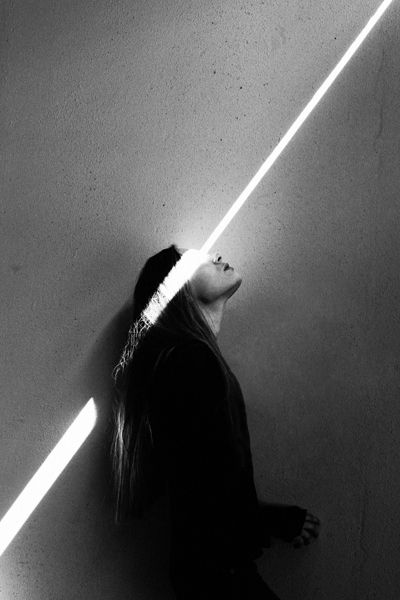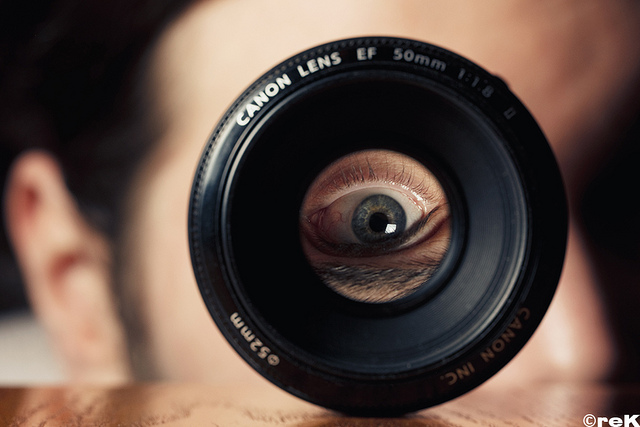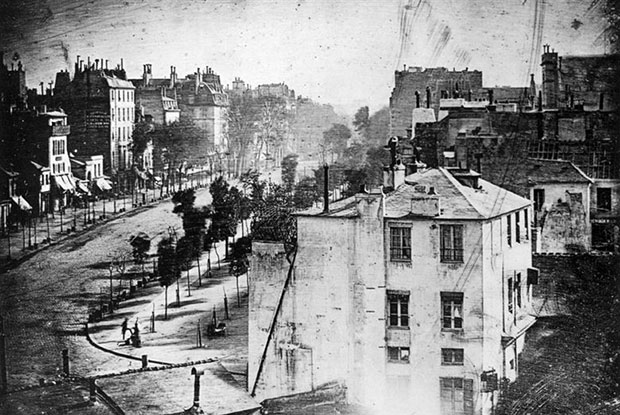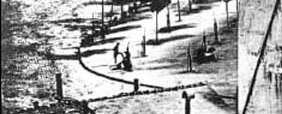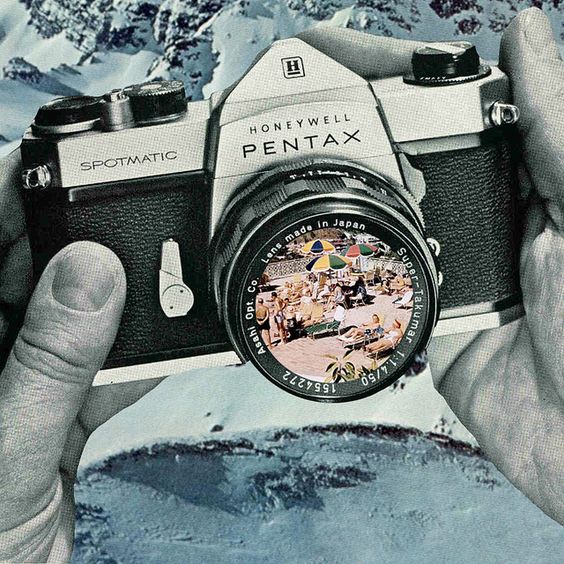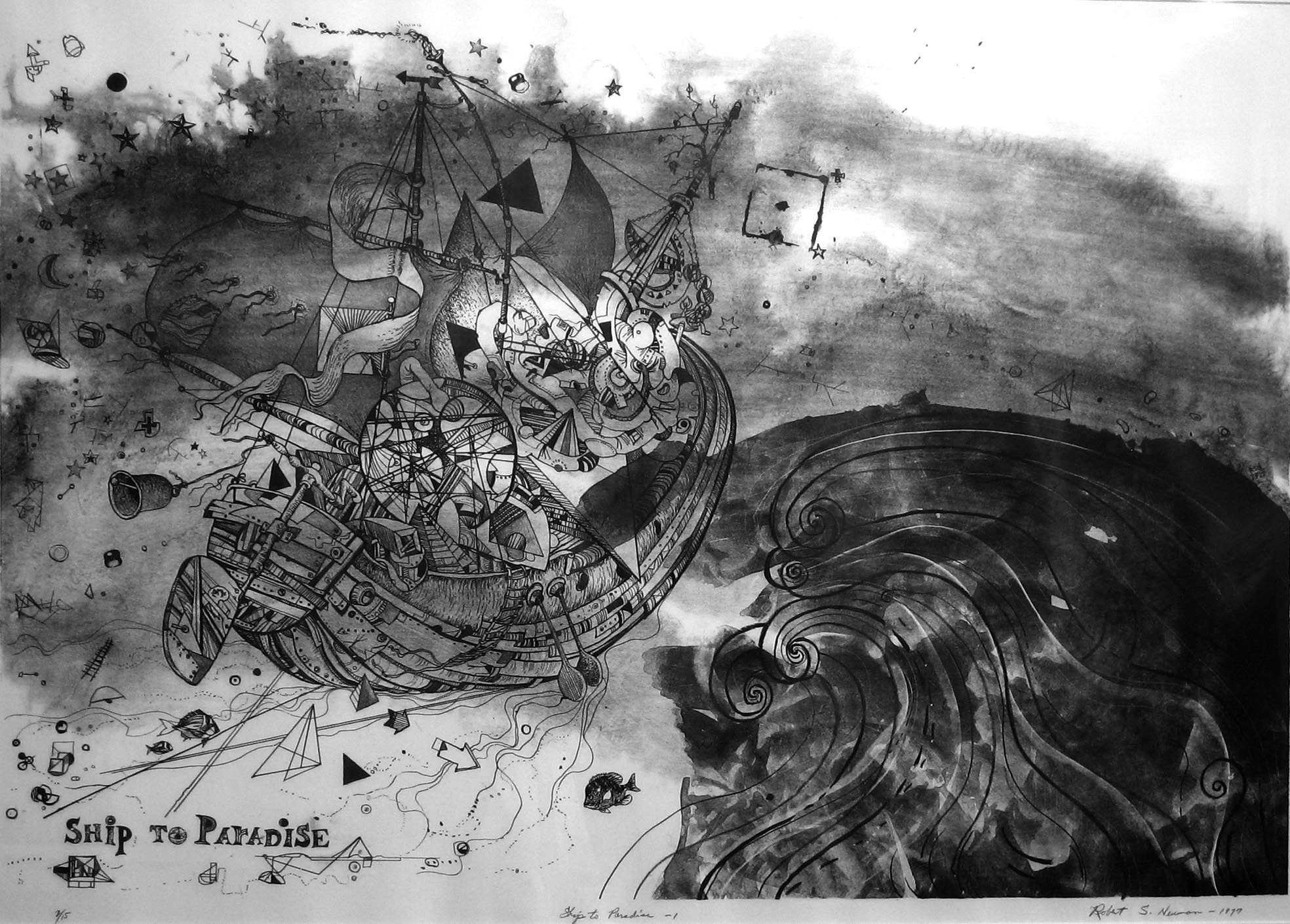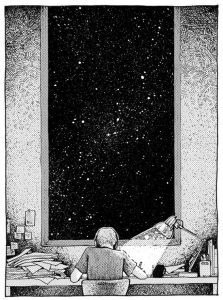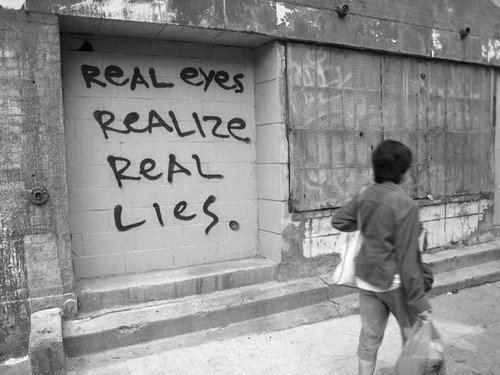
But if lies are “real” then they are no longer lies, but are truth, or have at least a sort of truthfulness to them. Lies exist. Even they have a place in reality. In fact, reality itself is partly constructed with lies. Lies have their faire share in the making of the foundation of what we deem reality.
The “rules” of reality are mere convention, and human made, therefore flexible sub-realities that make up the reality we all know and live in, as the puzzle pieces make up the picture. Those that govern and dictate these rules are too flexible and persuadable. Everything is so alterable.
If you want to define reality, you need to define people. In a way, reality and human beings are indivisible entities. Perhaps, reality is the product of the human race… or the human race is the product of reality.
I exist as a human being. This much I know is true – but what exactly constitutes a human?
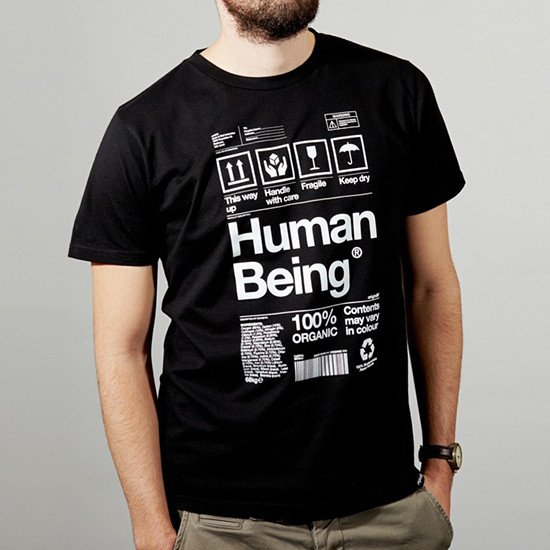
Surely, the definition of what it means to be human, what it means to be, is a human construction, a social construction because we’re looking at humanness from a human standpoint. Same too with reality. We perceive, define and categorize our world from the human stand point, with human eyes, using the facets and aspects of the human self to in fact define and perceive. How can we have “real” eyes when are eyes are just human eyes? We have human ideas concerning our world – how things should work, what things should do, look like, act – and sometimes these ideas of how things should be doesn’t exactly match up with the reality of the situation.
Not every family is as seemingly perfect this. Nor does a photograph portray “real” situations, people as they “really” are. In many ways, the photograph resembles human eyes: things are blurred, things are portrayed in a certain light.

Not every evening sunset is going to look or feel like this. In fact, the camera didn’t even effectively capture the sun’s rays and the colours of the sky in the background. The way my eyes saw the sunset was different from how the camera’s eyes saw it.
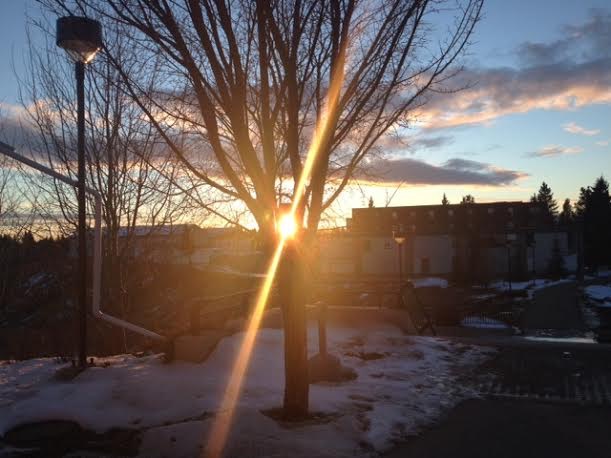
We’re all supposedly human beings, and we all supposedly and somehow live in the or a “reality”. But the way reality and human beings are presented isn’t always true. There’s some degree of falseness to our ways of living, and the ways of living that are advocated for, for the purpose of advertising, the unknown and ominous purposes of popular culture, the media as they exist in mediums like the Vogue magazine, and the purposes of a photograph.
See the common thing about these images is the degree to which the human is present and not so much present. It is as if humans are omnipresent, or at least the ideas and images of us are. Even when it comes to a photograph taken of the sun setting on the Augustana campus, we assume a human being took it – with a camera, but a person operating the camera nonetheless. And if people are as alterable as the digitally enhanced humans on magazine covers, so too is reality. We’re the ones perceiving reality, we’re the ones calling reality, “reality”, we’re the ones allocating things into the “real” and “fake” categories. And If we’re alterable, then so too are our definitions, so too is the/a/our reality.
But then even the fact that there are humans, and there is reality: these two separate words, implies that reality is transcendent, that reality is external to the human existence. What is reality like for the entities that are not human? Is their’s a different reality, or the same reality, just lived and perceived differently. I mean to say that humans are reality is a little egotistical. There is so much more to the world than humans, so much more to be perceived that the human senses can perceive, so many things that do not have a word and definition taped onto them. Just because things are unknowable to a human being, doesn’t make them any less real.
Truth is not empirical, I would argue. There are simply things that we cannot comprehend, things that are invisible, thing we are unable to see with human eyes, but nonetheless real.
Check out this link on Cal Redback’s art, or what he calls “Creative Re-touching”
cal redback manipulates human + nature into hybrid botanical bodies
Azzarello, Nina. “Cal Redback Manipulates Human + Nature into Hybrid Botanical Bodies” designboom | architecture & design magazine, <http://www.designboom.com/art/cal-redback-photo-manipulation-human-nature-02-23-20015/>. Accessed April 2017.
One interpretation is that these photographs are an amalgamation of both human and nature, unnatural and natural, societal and environmental. But what stands out to us, and for the very purpose of this blog, is that these photographs really express the notion that what can be “captured” can also be manipulated, malleable, effectively changed. These photos of these people were retouched in a way, in such an effective way, as to make it look as if they are actually, truly treebeards: hybrids of both human and nature. It looks so real.
Which makes us wonder, what is real, and what are lies, when the lines that divide “real” and “lie” are erased constantly? When photographs that are obviously not depicting what’s real, like people who have ferns growing out of their noses, are portrayed in a way that makes the subject matter look real, it really begs the question: do the photographs ever depict reality, real-ly?
What Cal Redback does is art. But what is art trying to tell us — if it’s trying to tell us anything at all — that reality can so easily be subject to manipulation, that neither reality nor its depiction is in any sense of word, real.


